 Vocal Filter
Vocal Filter Vocal Filter
Vocal Filter
By Jim Clarck, Thierry Rochebois and Jan Punter
The Vocal Filter module combines four resonant bandpass filters with adjustable center frequency and bandwidth. There are nine preset settings of these four filters, yielding nine different vowel-like sounds (A,E,I,O,U,Y,AA,AE,AO). The frequency spectra corresponding to these nine preset settings are shown in the following graphs. You can see the resonant peaks of the four component filters in each of the spectra. Note that their positions shift from setting to setting. This shifting of the resonant peaks (or formants as they are called in auditory studies) is what provides the listener with the perception of different vowels. For the most part, the amplitudes and bandwidths of the resonant peaks are fixed between settings, although the bandwidths of the filters as a group can be adjusted with the resonance control of the module. In real speech the relative amplitudes and bandwidths of the formants differ between vowels, and even within a given vowel they can be different.
Vocal Filter Module `A' Spectrum
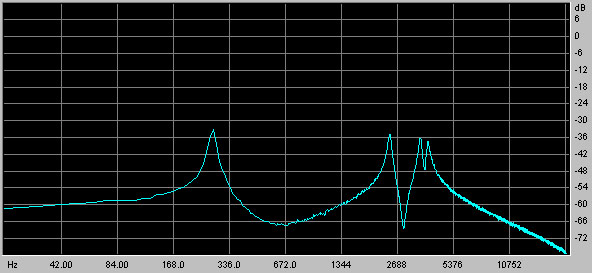
Vocal Filter Module `I' Spectrum

Vocal Filter Module `E' Spectrum

Vocal Filter Module `U' Spectrum
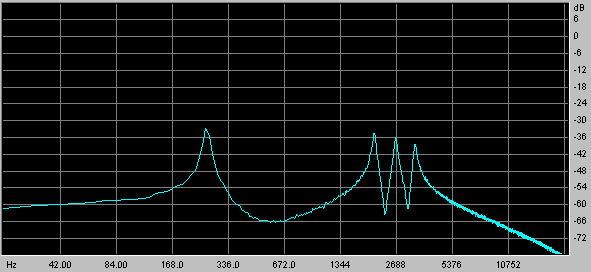
Vocal Filter Module `Y' Spectrum
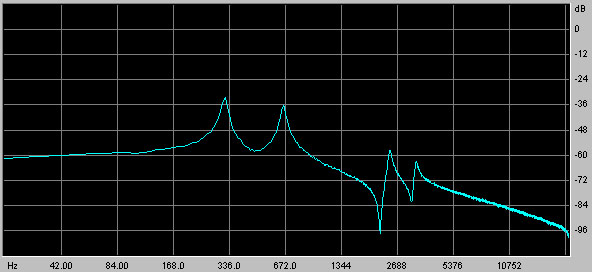
Vocal Filter Module `O' Spectrum

Vocal Filter Module `AA' Spectrum
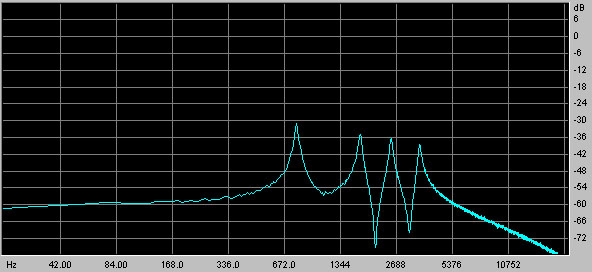
Vocal Filter Module `AE' Spectrum

Vocal Filter Module `OE' Spectrum
The vocal filter allows morphing between the vowels, by use of the vowel navigator control. This control can be set by the main control knob or through the control input voltage. This morphing allwos for a smooth transition from one vowel to another, as is often encountered in speech, or can be used to obtain intermediate vowel sounds part way between two of the preset vowels. For example, the graph below shows the spectrum for a setting of the control navigator halfway between the A and E settings.
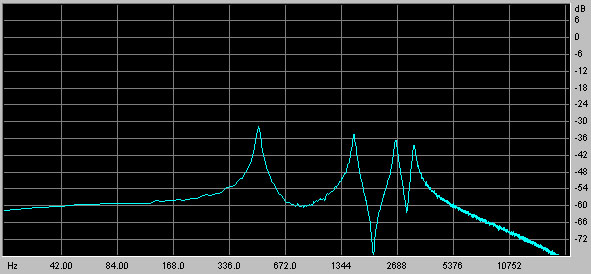
Vocal Filter Module `A-E' Spectrum

Thierry Rochebois (tiar@canamcomputers.com) has done extensive studies of the waveforms produced by the Nord Modular oscillators. His findings are presented in this section.
Clavia's generators are amongst the best in the digital domain. This page shows some sonagrams of sounds produced by these generators.
The main problem in the audio field is related to aliasing i.e. frequency folding. When you want to generate a frequency over half the sampling frequency, you obtain a frequency that is folded (i.e. the sampling frequency minus the wanted frequency).
The sonagrams shown on this page represents time on the horizontal axis, frequency on the vertical axis and amplitude as the grey level. A frequency sweep is applied to the generator : its pitch increases with time. The highest frequency shown is 22050Hz.
Classical Waveforms

Triangle
The triangle waveform has very low harmonics. Thus, aliasing occurs with very high fundamental frequency i.e. above 8kHz. You may notice that the highest frequency of a piano is about 5kHz !

Saw
The sawtooth waveform has very loud harmonics. Thus, aliasing occurs very easily. Clavia's generator is not aliasing-proof but it gives quite good results up too 3kHz. Above this some what high pitch you may notice aliasing
Square to Pulse Waveforms
Square and pulse provide very rich harmonic spectra.

SQUARE 50%
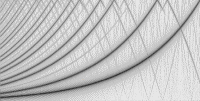
SQUARE 67%

SQUARE 75%

SQUARE 90%
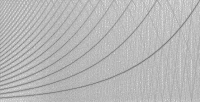
SQUARE 99%
Below 90%, the generator provides us a clean signal as long as the fundamental frequency is below about 3kHz. The 99% pulse gives a dirty signal full of folded harmonics.
The new Spectral Osc
This new oscillator provides us with the cleanest anti aliased signal I have ever seen on a digital synth ! As far as I guess, it is based on a DSF (Discrete Summation Function) principle, in brief it generate a limited number of harmonics and disables the harmonics that can be above half the sampling frequency. The dB amplitude of the harmonics decays linearly with the harmonic number. This oscillator can conveniently replace a 99% pulse generator (just set it on 127 with all harmonics). Square sounding sounds can be obtained with the Odd mode.

All 64

All 100
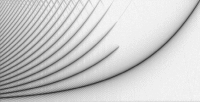
All 127

Odd 64

Odd 100

Odd 127
You can see the second harmonic being disabled with very high fundamental frequecies (above 6kHz). No aliasing can be heard nor measured in the "All" Mode. Some low level aliasing occurs in the Odd mode but I did not achieve to hear it !
If one of the engineers of Clavia reads this, I congratulate you for this OSC !
The new Formant Osc
This new oscillator provides us strange sounds. Clavia call them formant oscillators because they generate waveforms with "fixed frequency contents", i.e. spectral features that do not depend on the fundamental frequency. These features seem to be pseudo random. On the sonagrams they can be seen as horizontal textures.


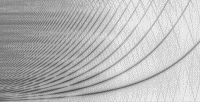
I have no idea of what kind of sound can be done with this osc (exepted Theremin like sounds). Technical note : some aliasing is related to my Guillemot sound card, this aliasing is limited to the rang 20kHz-22kHz. As a proof, just look at the Spectral Osc sonagrams.
 Patch Format
Patch FormatTo get more insight in the Patch Format, see the
Survey done by Jan Punter